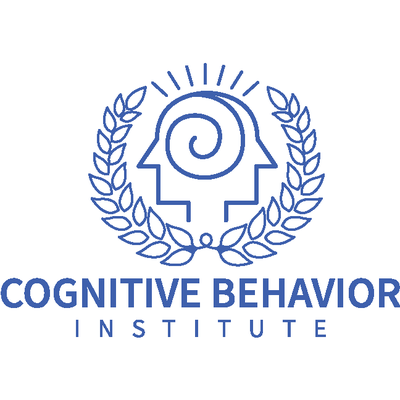Almost everyone experiences sleep problems during their lifetime. Children have nightmares and go running to their parents’ bedroom. Teenagers stay up late into the night and wake in the afternoon. Adults suffer from insomnia when they are stressed. Sleep problems can develop in other ways like sleep apnea, not breathing for 10 seconds or more during sleep, or restless leg syndrome (RLS), an urge to move your legs when lying down or sleeping. Lesser-known sleep disorders are circadian rhythm disorder that disrupts the sleep-wake cycle, hypersomnia issues like narcolepsy that cause difficulty staying awake during the day, and parasomnia when walking, talking, and eating can happen while asleep. According to the American Sleep Association, 50 to 70 million adults in the US are affected by a sleep disorder. In 2019, the Philips Global Sleep Study stated that globally 62% of adults disclosed they do not sleep as well as they would like. If you have medical issues like sleep apnea, narcolepsy, restless leg syndrome, circadian rhythm disorder or if you work night shifts, you should talk with your doctor about treatment options. Otherwise, learning about how sleep works can help you overcome sleep problems like insomnia which is a common disorder that can make it hard to fall and/or stay asleep.
Everyone experiences short-term insomnia when stressful life events happen like starting a job, getting a divorce, or illness. People who develop chronic insomnia are very fearful about having more insomnia and try to do everything they can to sleep. Unfortunately, all that effort to alleviate it often makes their sleep worse. Sleep comes down to the two basic principles of sleep drive and the body’s arousal system. Sleep drive is explained by this simple statement: the longer you are awake, the sleepier your body gets. The good news is that you can harness this power if you are not sleeping well. With insomnia, your body’s system of protection (arousal) can overtake the sleep drive by upshifting into hyperarousal in the form of sleep anxiety or effort. Over the years, we can develop habits that we think may be helping us but may actually be increasing sleep anxiety and contributing to insomnia.
Cognitive behavior therapy for insomnia (CBT-I) is an effective research-based approach that helps combat insomnia by using time in bed restriction and strategies to reduce nighttime anxiety. To harness the body’s sleep drive and make to it stronger, there are several things you can do:
- Limit your time in bed
- Do not sleep in – set a wake time and stick to it
- Do not go to bed early
- Do not nap
- Avoid dozing off
- Be active during the day
- Limit caffeine to 240 mg or better yet, avoid caffeine
Calming your arousal system is critical to sleep. Many people are concerned about falling asleep and how they will feel if they sleep poorly. Their arousal system becomes stimulated and anxious when bedtime rolls around. You may not realize that your body makes up for that bad night not by sleeping longer, but by sleeping more deeply. With that in mind, do your best to prepare your arousal system for sleep. In the evening, take an hour for relaxing and pleasurable activities that are not goal-driven. Do things like read a book, knit, watch a television show that is not overly stimulating, listen to calm music, a podcast, or an audiobook. When you go to bed, you will know in 15 minutes if you are going to have trouble sleeping. You want your bed to be associated with sleep and not outside concerns. If you find yourself awake or worrying, get out of bed, go to a different room, and again do the pleasurable, relaxing activities. Once you become sleepy, try going back to bed. You may have a couple nights when you do not sleep as much as you wanted but remember that your body will naturally recover. If you wake up in the middle of the night, do not look at the clock. Try this for at least two weeks. Looking at the clock triggers your system, and more than likely, will be upsetting. If you find that your mind is becoming active, you should, again, leave the room and do pleasurable, relaxing activities. Chronic insomnia did not develop in one night, so be patient with yourself and give the process time.
If you would like help tackling your sleep problems, contact CBI for more information at 724-609-5002, and one of our staff can assist you on this journey.
Extra Resources:
Carney, C. E., & Manber, R. (2013). Goodnight mind: Turn off your noisy thoughts and get a good night's sleep. New Harbinger Publications.
Meadows, G. (2014). The sleep book: How to sleep well every night. Orion.
Additional References:
Bootzin, R. R., & Perlis, M. L. (2011). Stimulus control therapy. Behavioral Treatments for Sleep Disorders, 21-30. https://doi.org/10.1016/b978-0-12-381522-4.00002-x Manber, R., & Carney, C. E. (2015). Treatment plans and interventions for insomnia: A case formulation approach. Guilford Publications.
National Institute of Health:National Heart, Lung, and Blood Institute. (n.d.). Sleep health. NHLBI, NIH.
https://www.nhlbi.nih.gov/health-topics/education-and-awareness/sleep-health Stimulus control. (n.d.).
Stanford Health Care (SHC) - Stanford Medical Center | Stanford Health Care.
World sleep day 2021 | Philips healthcare. (n.d.). Philips.
https://www.usa.philips.com/c-e/smartsleep/campaign/world-sleep-day.html

